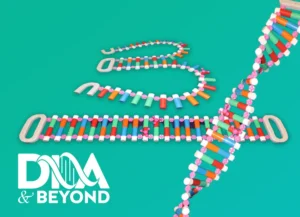#1. Did you know…
that Nucleic acids represent an important class of macromolecules that largely serve as the genetic material in living organisms and viruses? In fact, it is a bit shocking to learn that they are polymers of nucleotide monomers which have a variety of functions including being a biological energy currency–ATP, constituents of enzymatic cofactors and metabolic reactions, and, of course, acting as subunits of nucleic acids DNA and RNA.
#2. Did you know…
that the sugar molecules in nucleotides are known as pentose sugars? This is because they consist of five carbons in a pentagon-shaped ring and are labeled clockwise 1’ to 5’ based on each of the carbons. In nucleotides the pentose sugar is either ribose (C 5 H 10 O 5 ) or deoxyribose (C 5 H 10 O 4 ), differing in that the 2’ carbon in deoxyribose is devoid of an attachment of oxygen, hence the prefix “deoxy-.” Thus, the 2’ carbon in ribose is differentially attached to a hydroxyl (–OH) group while the 2’ carbon in deoxyribose is devoid of this feature.
#3. Did you know…
that in DNA, part of the excellence of design is the lack of the hydroxyl group (a hydroxyl group is a functional group consisting of a hydrogen atom bonded to an oxygen atom). This lack makes the DNA more stable as hydroxyl groups are prone to reactions with other molecules that may be unwanted by DNA and could destroy the molecular stability of the macromolecule–making it inefficient to use as genetic material.
#4. Did you know…
that nitrogenous bases are chemically basic molecules that contain nitrogen? These bases, like pentose sugars, are also ringed shaped but can be composed of one or two rings. Pentose sugars attach to nitrogenous bases at the 1’ carbon of the pentose sugar and together, the pentose sugar and nitrogenous base form molecules known as nucleosides (nucleotides without a phosphate group).
#5. Did you know…
that Thymine, C 5 H 6 N 2 O 2 , is chemically similar to uracil, C 4 H 4 N 2 O 2 , in that they are both pyrimidines with the same structure differing only in that thymine has a molecular tag, called a methyl group (CH 3 ), added to the molecular structure of uracil. This tag is the same molecule as the pair of tags added on our model near the middle. Specifically, the C-5 carbon of uracil is methylated, meaning the hydrogen (–H) atom attached to the C-5 carbon of uracil replaced with a methyl (–CH 3 ) group, to form thymine. The use of thymine instead of uracil by DNA is more costly in terms of the cell’s energy budget, but thymine allows for the detection of mutations in DNA, increasing the fidelity of the DNA mutation detection.
This is because within the DNA chain, the restructuring of cytosine to uracil through a reaction called deamination is not uncommon. This unfortunate change converts a stable G:C base pair (DNA rung) into an unstable G:U base pair. Thus, the fact that uracil is not usually a component of DNA makes these deamination mutations easily recognizable by the team of DNA proofreading and repair molecules that continuously inspect the double helix for such problem- spots. This helps to ensure that the proper genetic material is preserved.
#6. Did you know…
that nucleotides polymerize into nucleic acids through phosphodiester linkages? This amazing linkage is one in which the 3’ hydroxyl group of one nucleotide bonds to the phosphate group of another nucleotide through a reaction known as a condensation reaction. This bond is known as a phosphodiester bond because it is composed of two ester linkages, or bonds between the oxygen of the phosphate groups and another molecule: one between the phosphate oxygen and the 3’ carbon of one nucleotide’s pentose sugar and the other between the phosphate oxygen and the 5’ carbon of another nucleotide’s pentose sugar. The bonds are strong and covalent and serve as the stable backbone of the DNA molecule.
Source: Lehninger Principles of Biochemistry 6th Edition


